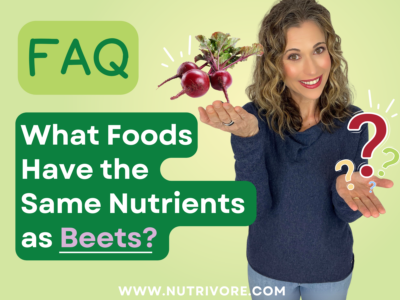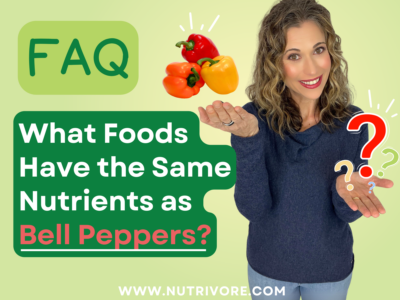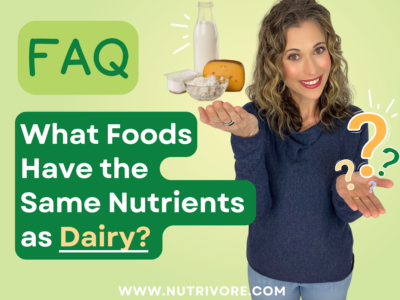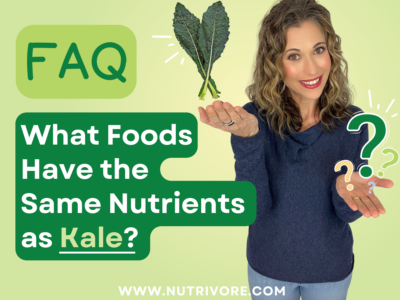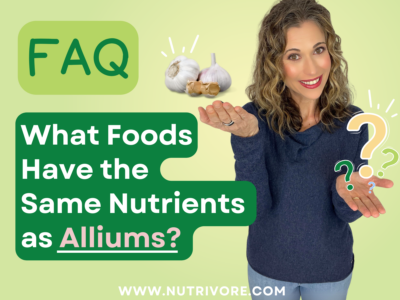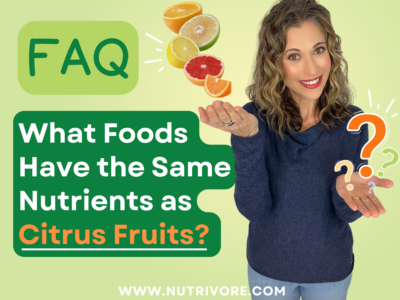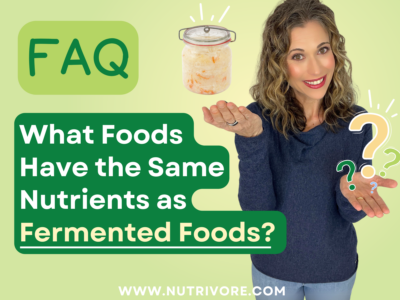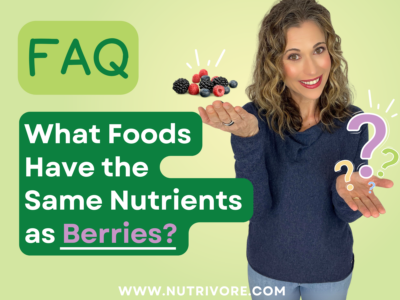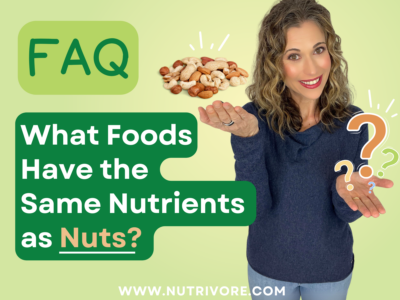What Family of Fruits Do Bananas Belong To?
Bananas are members of the tropical and sub-tropical fruit family.
What Nutrients Do Bananas Contain?
Subtropical and tropical fruit are some of the most nutrient-dense fruit options and are particularly valuable sources of beneficial fiber and phytonutrients, many of which have antioxidant properties.
Per 1-cup serving (~1 extra-large banana), bananas are an excellent source (20-50% daily value) of polyphenols, vitamin B6 (pyridoxine), and vitamin B7 (biotin); and a good source (10-20% daily value) of copper, dietary fiber, magnesium, manganese, potassium, vitamin B5 (pantothenic acid), and vitamin C, with smaller amounts of vitamin B2 (riboflavin), vitamin B9 (folate), vitamin B3 (niacin), vitamin B1 (thiamin), choline, ALA, phosphorus, selenium, vitamin E, iron, zinc, coQ10, vitamin A, vitamin K, calcium, phytosterols, and carotenoids.
Health Benefits Associated With Bananas
Although “fruit and vegetables” are often lumped together when talking about the health benefits of plant foods, fruit is independently beneficial! That means that we benefit from adding fruit to our diet even if we’re eating plenty of veggies. Health benefits attributed to fruit specifically include improved gastrointestinal health (including protection from irritable bowel syndrome IBS, irritable bowel disease IBD, diverticular disease, constipation, and colorectal cancer), reduced risk of cardiovascular disease, reduced risk of type 2 diabetes, reduced risk of metabolic syndrome, long-term weight management, protection against lung cancer, improved bone mineral density, reduced asthma severity, reduced risk of depression and other psychological conditions, reduced severity of autism spectrum disorders, reduced risk of seborrheic dermatitis, and reduced severity of chronic obstructive pulmonary disease.
When looking at bananas specifically, research has shown that they can help aid in the treatment of gastrointestinal diseases, reduce fasting blood sugar levels, improve insulin sensitivity, lower blood cholesterol, and one case-control study even found that eating bananas had a dramatic effect protecting against colon cancer (72% lower risk when eating at least 3 bananas per week)!
Ways To Eat Bananas
Even though bananas are one of the most popular American fruits, some people don’t love eating them. If you’re not allergic to them but are having trouble getting them into your diet, try hiding them in other foods. For instance, you can add them to smoothies, or incorporate them into baked goods or pancakes, and they can even be blended and frozen to make a dairy-free ice cream substitute! In addition, bananas taste differently depending on their level of ripeness. You may enjoy bananas when they are on the green-side as opposed to when they are fully ripe and covered in brown spots, or vice-versa!
What if I Don’t Like Bananas?
Wondering how to reap the health benefits associated with this healthy food if you aren’t a fan of bananas or can’t eat them due to an allergy, I’ve got you covered!
Bananas are special because they are a good source of resistant starch, especially when they are slightly green, and they provide potassium.
Resistant starch is an important type of fiber. It is insoluble yet highly fermentable and plays a major role in the generation of short-chain fatty acids by gut bacteria. Other foods that provide resistant starch include potatoes, rice, legumes (such as lentils, black beans, and white beans), root vegetables, and whole, starchy foods. You can increase the resistant starch content by cooking these foods and then cooling them before eating. You can then eat them hot or cold, it just matters that they’ve been cooked and then cooled.
When it comes to potassium, a serving of banana delivers 12% of the daily value, which translates to 537.0 mg of potassium. While this isn’t high enough to consider bananas among the top potassium-rich foods, they are still a valuable source of this mineral since there are few foods that offer a lot of potassium and foods that are higher sources of potassium do not provide much more potassium per serving, plus bananas have the added benefit that they are convenient to eat. Potassium is an electrolyte mineral with roles in a wide variety of life-sustaining processes meaning that potassium helps with various roles such as heart function, muscle contraction, nerve impulse transmission, blood pressure control, blood pH, and fluid balance. Other good sources of potassium include: potatoes (which also have resistant starch), sweet potatoes, winter squash, avocados, milk and yogurt, bamboo shoots, water chestnuts, and fresh hearts of palm (if you can find them).
Overall, plantains are the most similar food to bananas nutritionally (no surprise since they are closely related!). If you’re not allergic to bananas but simply don’t like them, plantains can be a great alternative. They offer a different taste experience depending on their ripeness. Green plantains, often used in recipes like tostones, do not taste like bananas at all and have a starchy flavor. Yellow plantains taste slightly banana-like, while fully-ripe plantains are sweeter.
Even though bananas are nutritionally valuable, they are not unique. There are plenty of other foods that can provide the same nutrients. As always, it’s important to remember that you don’t have to eat bananas if you don’t want to. Focus on all of the nutrient-dense foods you enjoy, have access to, and can afford and prepare them in a way that you love! There is no one perfect Nutrivore diet—there is a ton of flexibility of food choice that aligns with Nutrivore principles. And, Nutrivore celebrates every small step you take towards consuming a more nutrient-replete diet. Don’t forget that the diet you follow or don’t follow now does not impact your long-term health, what does is your lifelong eating patterns!
If you’re interested in my thoughts on nutritional swaps for bananas, check out my video below and if you want to learn more about bananas check out my detailed article here. Looking for other foods rich in the important nutrients found in bananas, including potassium and fiber? I’ve got you covered! Check out my Top 25 Foods for Every Nutrient E-Book, which highlights top foods for 42 important nutrients.
Food Swaps
If you’re looking for swaps for other foods check out these posts!



